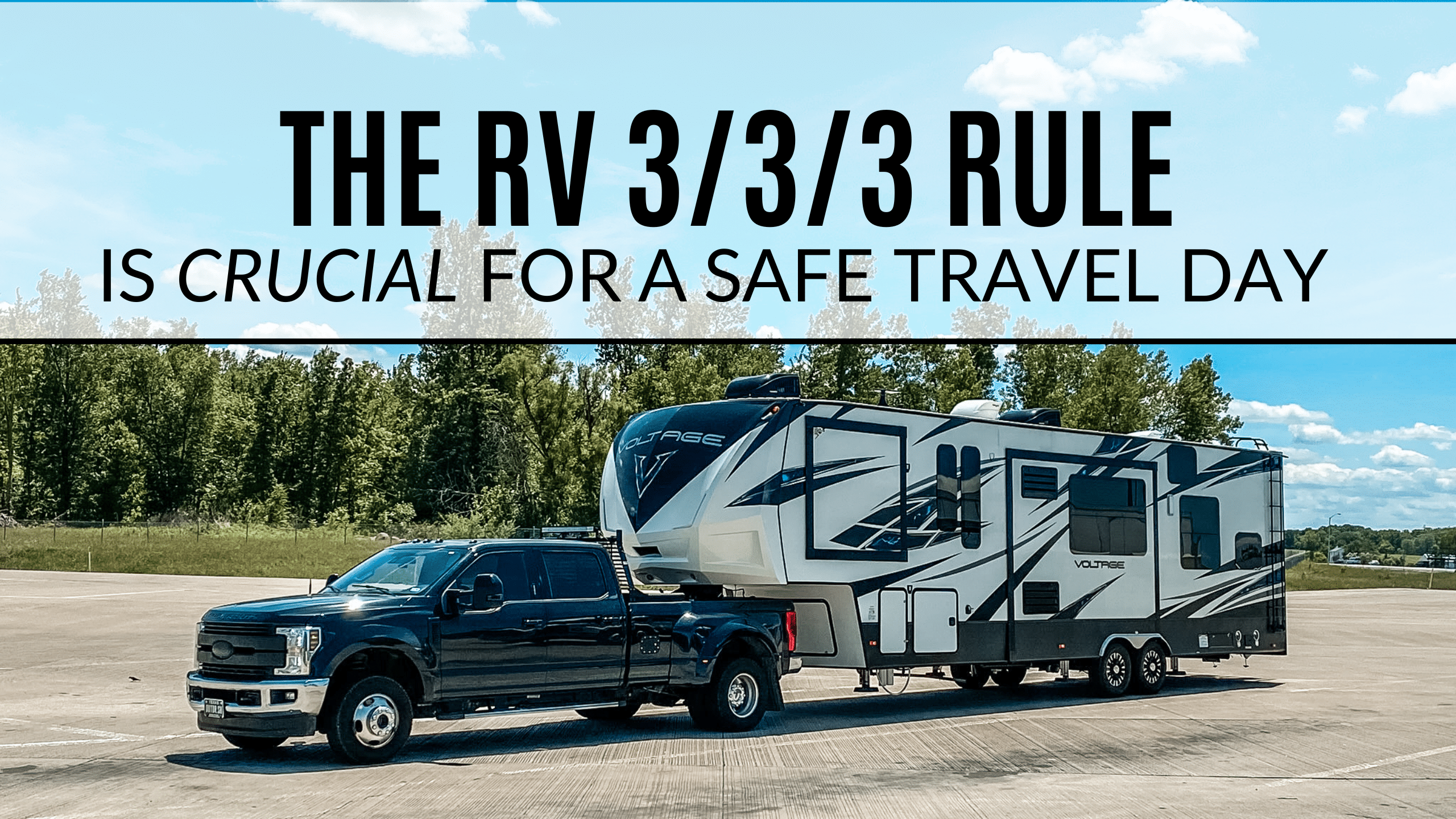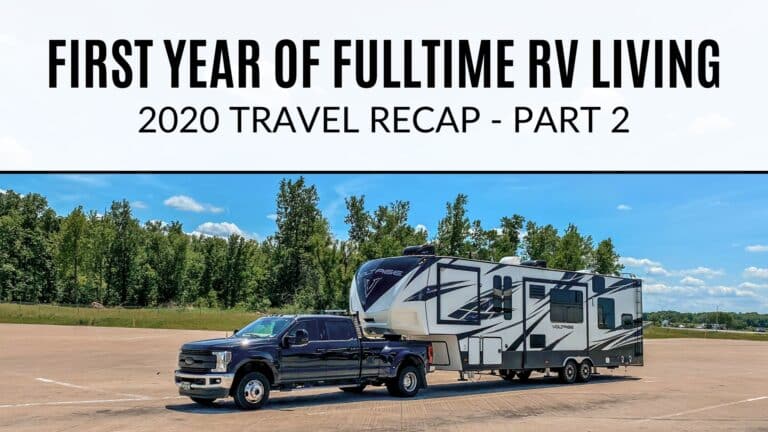What is the RV 3 3 3 Rule?
The RV 3 3 3 rule is a crucial part of having a safe and less stressful RV travel day. Getting on the road with an RV isn’t as simple as getting in and going. There are many critical steps that need to be followed in order to have a safe travel day.
Thankfully, the RV 3 3 3 rule is a great guideline to help you map out your route ahead of time and help with these long days on the road!
What is the RV 3 3 3 Rule?
The RV 3 3 3 rule is a set of guidelines created by RVers that will help you plan your RV travels and make traveling easier for the whole family.
The 3 3 3 rule is easy to remember since each part starts with the number 3! Let’s take a look at what each 3 in the rule stands for.
Drive Only 300 Miles in One Day
Driving an RV takes a little more consideration and skill than driving a regular car. While you may have been able to cover hundreds of miles on road trips in the past, you’ll definitely want to slow down for an RV trip.
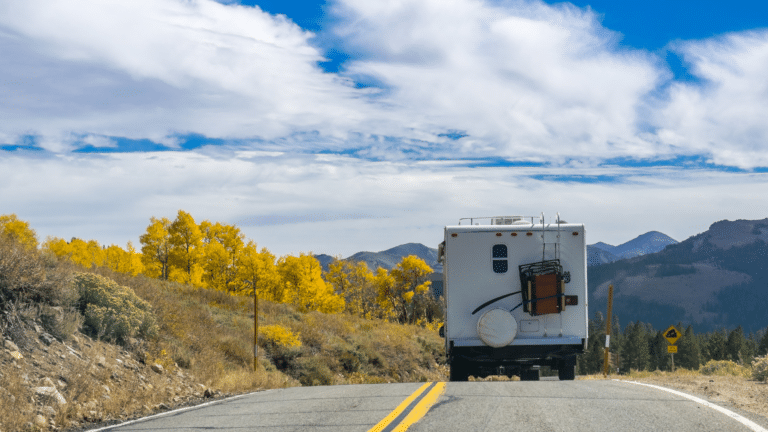
Another thing you’ll want to consider is time spent behind the wheel and time for gas and rest stops. Again, RV travel is slower than traveling in a normal vehicle. Driving 300 miles in an RV could very well take 5-6 hours.
By planning your route in advance and using the 300-mile limit as a rule of thumb, you’ll prevent both physical and mental fatigue allowing you to stay more fresh and alert on the road.
Arrive No Later Than 3 pm
We all know travel days can be unpredictable! Aiming to arrive at your campsite by 3 pm will give you ample time to get checked in, level your RV, unhook, and set up camp.
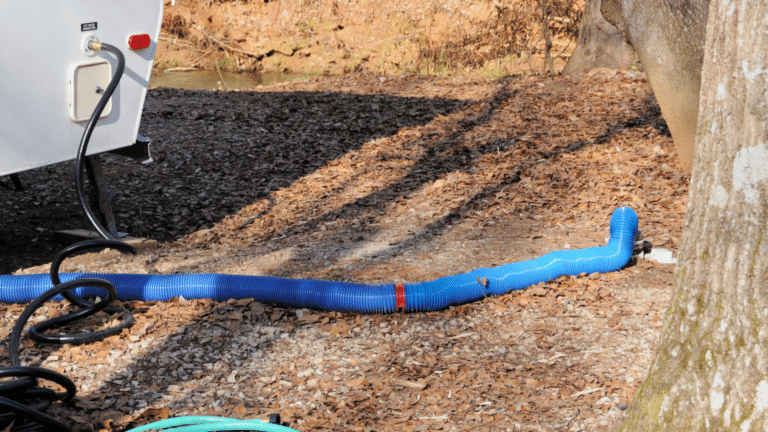
Aside from having ample time to set up your RV, arriving by 3 pm will also ensure you’re at your campground before dark. Not only is it easier to get parked and set up during the daytime, but you’re also being considerate to any neighbors you might have by not showing up and making lots of noise late at night.
Many RV parks and campgrounds have designated check-in times, so make sure to check those before you hit the road. Even if we don’t make it to the campground before 3 pm we still aim to arrive before dark or before “after-hours check-in” to make things easier on ourselves.
Stay at Least 3 Nights
To prevent fatigue, you’ll want to camp somewhere for a minimum of 3 nights. Setting up and breaking camp involves effort even if you have a simple setup.
The first night you arrive you’ll have plenty of time to set up your campsite and get familiar with the campground and surrounding area. The next few days can be spent exploring the area you’re visiting or relaxing at the campground. Either way, it’ll give you a break from driving and packing/unpacking the RV.
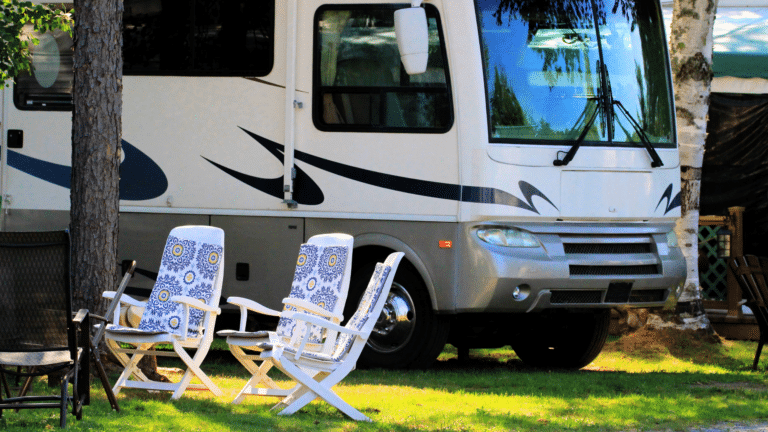
Since we are full-time RVers, and work during the week, we *usually try to stay a minimum of one week between travel days so we’re not traveling on a work day. This gives us plenty of time to get the RV setup and make sure we’re ready to work on Monday.
Use the RV 3 3 3 Rule to Help Plan Your Route
Typically, we plan our route a couple of months in advance. Using the RV 3 3 3 rule helps us make sure we’re not overdoing our travel days and is a good rule of thumb to follow while making plans.
If you’re not a planner, then an alternative RV guideline might be better suited for your travel style.
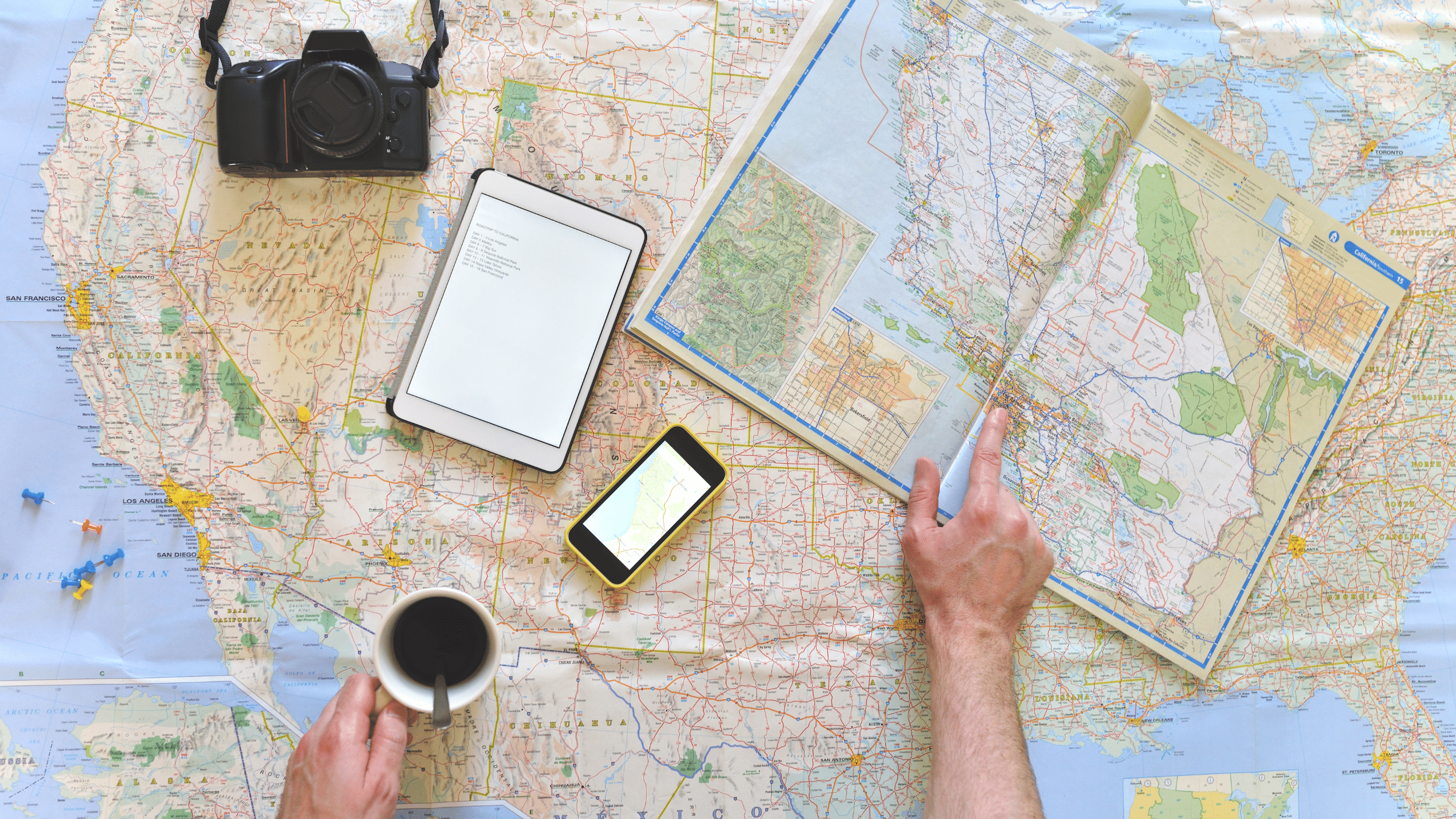
Alternative RV Guidelines 2 2 2 and 4 4 4 Rules
The RV 2 2 2 and RV 4 4 4 rules are very similar to the RV 3 3 3 rule we just covered.
The RV 2 2 2 rule is driving fewer than 200 miles, arriving at your campground no later than 2 pm, and staying for 2 nights. This will allow you to drive less during the day and make more stops for sightseeing along your route.
The RV 4 4 4 rule is driving less than 4 hours, arriving no later than 4 pm, and staying 4 nights or less. This will allow you to make the most of every destination you visit.
Do you follow the RV 3 3 3 Rule or a version of it?
Remember whatever “RV rules” you choose to follow, they are just guidelines. Whether you want to follow the 3 3 3 rule or a combination of your own “rules”, preplanning your route and stops will help you have a fun and safe trip.
Do you follow one of these rules? Or have you created your own system for RV travel? Let us know in the comments!

Did you find this post helpful? Make sure to pin it for later!
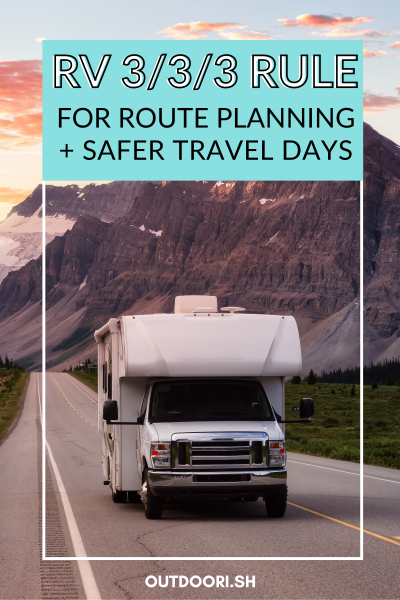
New to RVing? Check out the below posts for various RV tips!
 What is the RV 3/3/3 Rule?
What is the RV 3/3/3 Rule?
The RV 3/3/3 rule is a crucial part of having a safe and less stressful RV travel day. Getting on the road with an RV isn’t as simple as getting in and going. There are…
 How To Use An RV Microwave Convection Oven
How To Use An RV Microwave Convection Oven
You may have noticed many new RVs are coming equipped with microwave convection ovens. In fact, many RV manufacturers are ditching the standard propane-powered ovens altogether! An RV microwave convection oven is a great tool…
 12 Tips for a Successful First RV Trip
12 Tips for a Successful First RV Trip
2021 is going to be the year we see more people than ever hit the road for their first RV trip. The RV industry is booming! In a year where many businesses were struggling, RV manufacturers…
 Tornado Preparedness For RVers
Tornado Preparedness For RVers
Experiencing a storm in an RV or trailer can be a truly terrifying situation. In 2020 alone, we found ourselves potentially in the path of a tornado on 4 separate occasions. However, staying prepared and…
 RV Quick Tips: Fixing a Squeaky Slide
RV Quick Tips: Fixing a Squeaky Slide
About 6 months into living in our RV full-time, we started noticing an AWFUL screeching noise whenever we would pull our living room slide in and out. 😬 The slide was really jerky and almost…
 RV Quick Tips: Replacing RV Water Heater Anode Rod
RV Quick Tips: Replacing RV Water Heater Anode Rod
It wasn’t until 6 months into full time RVing that we ever heard anything about a water heater anode rod. Maybe that’s common knowledge, but it’s something we definitely didn’t know about!! Of course we…
